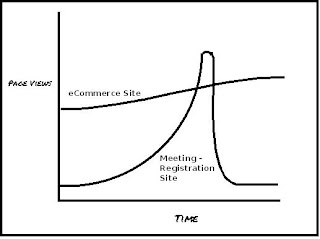The
Web provided the pathways. The software provided the user with
sophisticated tools and utilities. Social media – like Facebook,
LinkedIn, Google Plus, Twitter – provided the community and forum.
All of which has contributed to far reaching change in the way we
interact, conduct business, pursue careers, and entertain ourselves.
bitod
(back in the old days) we were
mostly a private people – we were limited by desire and opportunity
in what information we shared with others – even the braggards and
attention seekers had limited range on spreading their exploits. The
notables and infamous receive greater exposure when the news media
ignite their 15-minutes of fame.
bitod
social interaction was
predominately face-to-face, by telephone conversation, and through
written letters.
bitod
information about individuals was costly to collect and therefore was
not freely shared – although
bulk information about people
was a salable commodity.
Along
comes the ability to easily share information – among friends and
family or in the business community – and the information about
individuals exploded, becoming widely available, intentionally and
inadvertantly.
Many
found an advantage in creating a personal legend using LinkedIn to
chronicle professional activities and accomplishments; or Facebook to
develop an on-line personality mixing social and professional
interest and exploits. This information is available for others to
discover or the individual can point
interested parties to it.
An
alternative to traditional interaction is asynchronous written
communication: instant message (IM) or text messaging. Using the
phone keyboard one person can send a text message to another phone
and the recipient can receive it immediately. Even
though the message is a one-way send-receive process, the parties
often carry on a 'conversation' of text
messages going back and forth.
With
the variety of communication alternatives now available, ranging from
personal to impersonal, active to passive, engaging to transactional,
the social paradigm – how we interact has been shaken up while
being broadened dramatically.
People
can share their most intimate thoughts and actions delivered in an
impersonal way
– by posting on-line.
Messaging
is so handy and people are quite skilled in its special language as
well as the speed of writing and sending, that they may
be texting the person sitting
next to them.
Text rather than talk –
indirect rather than direct is part of the shifting paradigm.
Others
try with limited success to restrict personal information on-line and
in social media sites, only to find it is elsewhere on the Net. A
friend was shocked to learn that her name, age, address, and others
in the household were readily available on-line from several sources,
although she has been judicious about protecting such information.
During
a presentation at Verisign earlier this year, Vint Cerf made the
point that there is no privacy on the internet - it is a
vast copy machine with no delete key.
Any information about you can
be found eventually.
How
does this affect the new social paradigm? The common assumption is
detailed information about the individual is available through social
media and on the Web. The unspoken assumption is what is not readily
available did not happen.
How
does all this come together and how does it affect you?
You
are profiled on the internet – your legend is a combination of what
you have contributed directly –
like your content on Google Plus, LinkedIn, and Facebook – and
passive content that search engines and information aggregators
discover.
Today
a person interested in your background, accomplishments, and
activities will research it
on-line and use their own
legend on the internet as a metric of the
accuracy
and completeness of your
information.
For
those
of us in business – whether selling products/services, working in a
role within an organization, or in a transition between roles – our
collective profile is an important tool to
increase our visibility and
aid in our success.
A strong showing aids in a winning contract, a promotion, or landing
a new job; a weak showing can
make it harder to reach your objective.
Personally
I use LinkedIn as my address book and research tool for a person's
career and accomplishments. I glance at Facebook content to get a
broader sense of the individual. Google Plus is a running faucet of
activities, thoughts, and alerts from people I find worth listening
to about near and future innovation and change.
We
each have a collective
profile on the internet; it is important that
you contribute and shape your
content where able. That means working on your presence in the social
media sites and publicizing your activities to be visible for search
and information aggregators.
Writing
a good profile (and updating it every 3-6 months) is an investment of
your time and energy – but worth the results. Adding other content
routinely to the site shows
you are engaged and paints a vivid picture of your capabilities and
interests. If not posting your own blog, commenting
on others' posts increases your visibility, especially among your
tribes – the people
you know and others who may
be interested in you.
Today's
social paradigm is built on ready access to information about people
and their activities and an array of methods to make contact, carry
on conversations, and develop relationships.
Time
has past to sit in wonder about how to engage social media for your
benefit – your absence or 'in-name only' participation is
not an answer.


